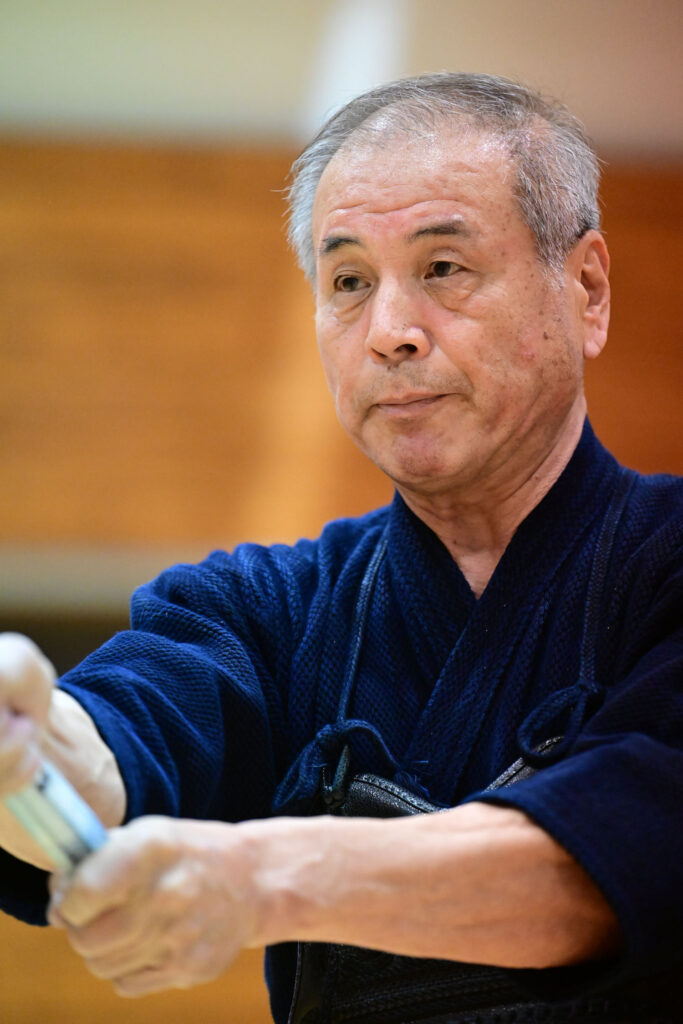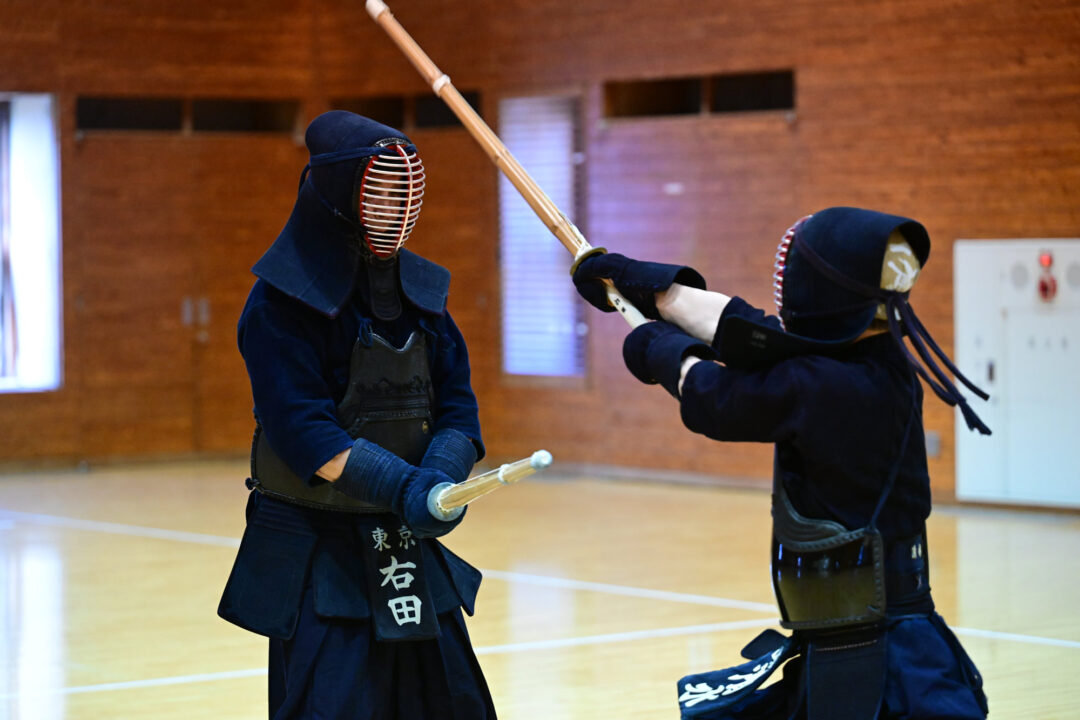2024.6 KENDOJIDAI
Composition: Teraoka Tomoyuki
Photography: Nishiguchi Kunihiko
Translation: Pepijn Boomgaard
Kokushikan University teacher Migita Shigeaki, since his days as a student at PL Gakuen High School and Kokushikan until now, has always focussed on the basics of Kendo. ”Kendo is something you study for life, which is why I want my students to always aim to improve their Kihon.” He talked to us about the essentials of Kendo training.
Migita Shigeaki (Hanshi 8th Dan)

The Kihon learned at PL Gakuen became the foundation of my Kendo
I believe that, more than anything else, Kihon is the heart of Kendo training*. I turned 68 this year, and I especially started practicing Kihon after entering PL Gakuen, something I have continued to do to this day. I think that this is why I am still able to practice Kendo in good health today.
Looking back at my journey so far, when I started Kendo in junior high school, I did not have an instructor and could not learn the basics well. Instead, I also took up track and field and baseball, which helped me to build up my basic physical fitness, and I believe that I have acquired well-balanced athleticism. It is often said that Kendo must be started at a young age to acquire the skills, but I do not believe this to be true. Rather, if you just do Kendo, you will only develop the muscular strength necessary for Kendo, and your body will become unbalanced. If you can someday find a teacher who can teach you the basic fundamentals, you should be able to grow from there, no matter your age.
The fact that I entered the PL Gakuen Kendo club with my hands and feet out of sync and unable to do the basics appears strange to me now, but it had an enormous impact on my life. In my first and second years, I practiced the basics thoroughly through repeated Kirikaeshi and Kakarigeiko. This experience has definitely become the foundation of my Kendo. I was ranked 16th out of the 16 people in my year, but by the summer of the second year, I was ranked first. Of course, the physical ability passed on to me by my parents was a major factor, but I believe that I was able to grow quickly by experiencing a variety of sports in junior high school, and by having the basics drilled into me in high school.
In my third year, Kawakami Takashi Sensei took over as coach, and the training became even harder. Kawakami Sensei talked about “winning without anyone complaining.” With this he meant winning with correct Kendo. He taught me to not let my left foot pass my right foot by tying a piece of bamboo to my right leg. I was also made to strike with a Bokuto on my back so that I would use a straight and correct posture. And he taught me to strike in one step without first moving my feet. All of these things were necessary for me to learn correct Kendo. Because of this experience, I was able to pursue correct Kendo at Kokushikan University without feeling out of place.
Kokushikan required both mastery of the basics and competitive success
The rest of this article is only available for Kendo Jidai International subscribers!


